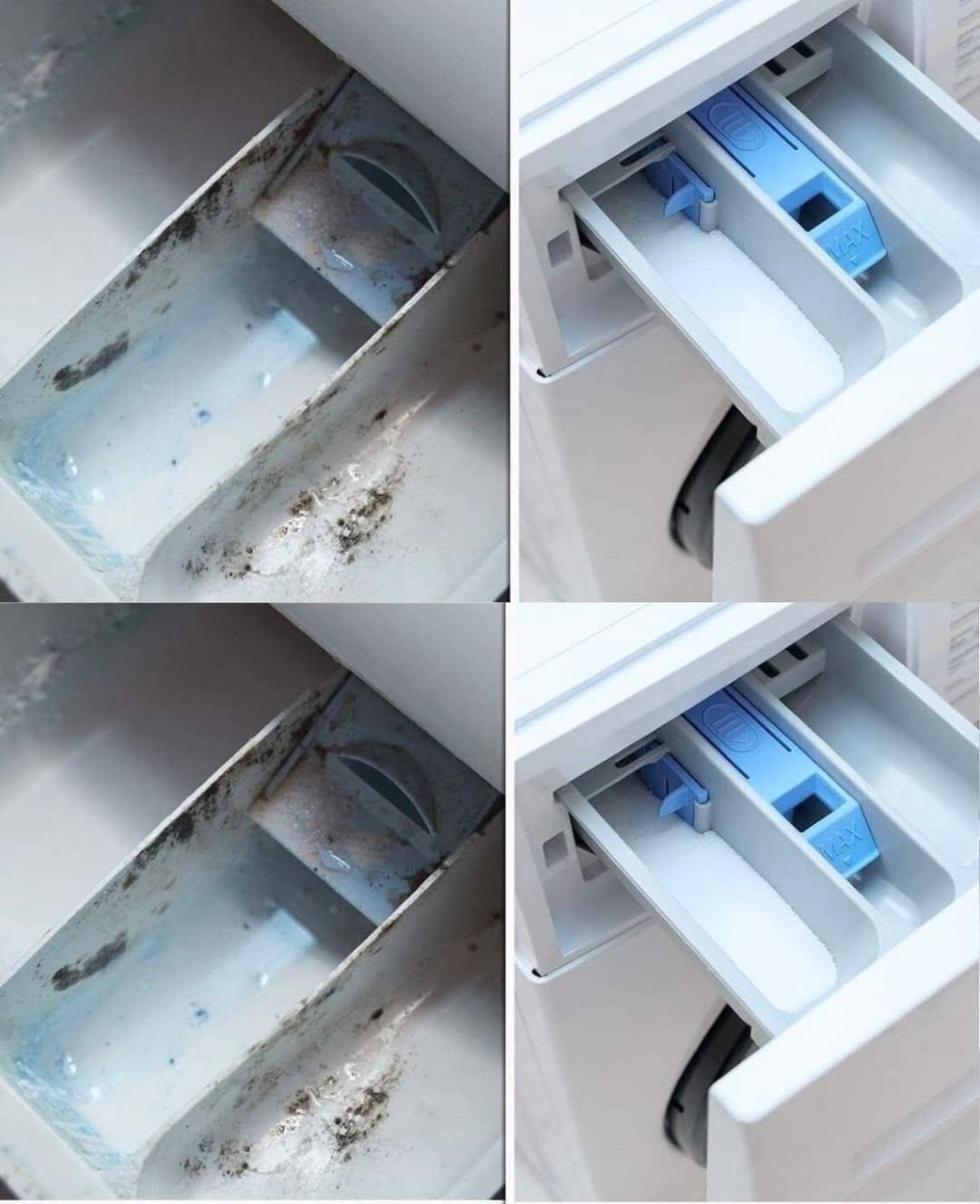ADVERTISEMENT
What You’ll Need:
- White vinegar
- Baking soda
- A soft cloth or sponge
- A toothbrush or small cleaning brush
- A bowl of warm water
Step 1: Remove the Drawer
First, pull out the washing machine drawer from its compartment. Depending on your washing machine model, this may require pressing a release button or gently wiggling the drawer out. Once removed, inspect it carefully for visible mould, mildew, and detergent residue.
Step 2: Soak the Drawer
Fill a bowl or basin with warm water and add 1-2 cups of white vinegar. Place the drawer into the mixture and let it soak for 15-20 minutes. Vinegar is a natural disinfectant and works wonders to break down soap scum and mould. The acidic properties of vinegar help dissolve any stubborn buildup, making it easier to clean.
Step 3: Scrub Away the Grime
After soaking, use a toothbrush or small cleaning brush to scrub away any remaining mould, mildew, or detergent residue from the drawer. Focus on areas with visible buildup, especially the corners and crevices. For extra tough spots, sprinkle a little bit of baking soda on the surface of the drawer and continue scrubbing. Baking soda acts as a gentle abrasive, helping to lift grime without scratching the surface.
Step 4: Rinse and Dry the Drawer
Once the drawer is clean, rinse it thoroughly under warm water to remove any leftover vinegar and baking soda. Use a soft cloth or towel to wipe down the drawer, ensuring it is completely dry before reinserting it into the washing machine. It’s important to dry the drawer completely to prevent moisture buildup that could lead to mould regrowth.
Step 5: Clean the Drawer Compartment
While the drawer is drying, take a moment to clean the compartment where the drawer sits. Use a damp cloth to wipe down any remaining detergent residue or soap scum. For stubborn spots, dip the cloth in a vinegar solution (one part vinegar to one part water) and scrub away any grime in the compartment.
Bonus Tips for Preventing Mould and Residue in the Future
Now that your washing machine drawer is sparkling clean, here are some additional tips to keep it fresh and free of mould:
- Leave the Drawer Open: After each wash cycle, leave the washing machine drawer slightly open to allow air circulation. This will help dry out any moisture that may have accumulated and reduce the risk of mould growth.
- Use the Right Detergent: Stick to high-efficiency (HE) detergent, which produces less foam and is less likely to leave a soapy residue. Be sure to follow the recommended dosage to avoid excess detergent buildup.
- Clean the Drawer Regularly: Make it a habit to clean your washing machine drawer every month to prevent mould and detergent buildup. A quick wipe-down after each wash can also go a long way in maintaining cleanliness.
- Run a Cleaning Cycle: Many washing machines have a self-cleaning cycle. You can use this feature with white vinegar or a specialized washing machine cleaner to clean the inside of the machine, including the detergent dispenser.
- Use a Drying Cloth: Keep a dry cloth on hand to wipe the inside of the drawer after each use. This will help prevent moisture from accumulating, reducing the likelihood of mould growth.
Conclusion: A Fresh and Clean Washing Machine Drawer
With just a few simple ingredients like white vinegar and baking soda, you can restore your washing machine drawer to its original, mould-free condition. Regular cleaning will not only help prevent unpleasant odours and residue buildup, but it will also ensure that your washing machine is working efficiently and effectively.
By incorporating these cleaning habits into your routine, you’ll enjoy cleaner clothes, fresher laundry room air, and a washing machine that works like new. So, go ahead—check your washing machine drawer today and give it the fresh start it deserves!
ADVERTISEMENT
ADVERTISEMENT
